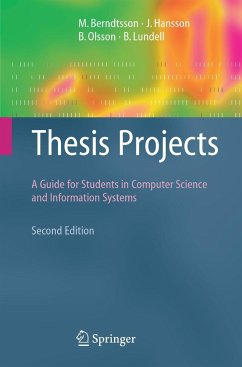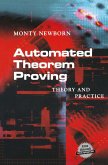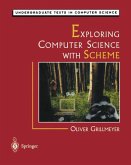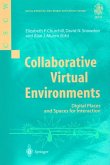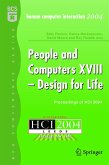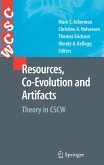Any B. Sc. or M. Sc. study programme in the computing discipline typically ends with a capstone project. A capstone project builds and tests the skills and the knowledge acquired during the education and is an essential part of the training towards becoming a professional. There is a large number of different terms for these types of projects: capstone project, senior project, final year project, B. Sc. / M. Sc. thesis project, etc. In this book we will use the term 'thesis project', and in some cases, for the sake of simplicity, just 'project'. This book focuses on thesis projects within the computing discipline. Thus, the type of project discussed in this book is in line with the capstone format described in the ACM/IEEE Computing Curricula 2001 Computer Science (p. 53): ... an alternative capstone format is a research experience that includes some original work, a review of the scientific literature, and an investigation of a proposed solution, f- lowed by a scientific paper and/or an oral presentation of the results. It is important to remember that these are undergraduates and be realistic about the amount and quality of research expected. Even so, it may be more worthwhile to expose outstanding students to the challenges of research than to have them design and build yet another program In this book, we present a process for conducting thesis projects with the resear- orientation described in the quote above.
From the reviews:
"The authors have written a short book for students doing final year projects in computer science and information systems. Because the authors are from Sweden, the details of the procedures and expectations will vary in other countries. However, in the hands of a discerning reader, this book could be useful at several levels, at many colleges and universities, and in many countries.
The first section of the book introduces general concepts related to final year projects. Chapter 2 describes research and research methods in computer science and information systems. Chapter 3 discusses the roles of the student, the supervisor, and the examiner. Chapter 4 provides a very brief overview of the process of conducting final year projects.
The second and most extensive section of the book describes chronologically the major steps in the project. Chapter 5 describes the process of choosing a subject and developing a formal proposal. Chapter 6 explains how to handle references in the literature search. Chapter 7 describes the process of narrowing the aim of the project. Chapter 8 covers developing project objectives and choosing methods. Chapter 9 briefly discusses following, or not following, the project objectives. Chapter 10 takes a careful look at presenting and analyzing the data. Chapter 11 discusses drawing your conclusions, evaluating your work, and identifying future work. Finally, chapter 12 discusses the oral defense.
The third section of the book consists of a set of supplementary chapters. Chapter 13 discusses the report itself, including both general writing style and specific citation styles. Chapter 14 turns the tables and examines the examiner's role. The book also includes a bibliography, a list of things not to do, and a list of relevant bibliographies available on the Internet.
According to the authors, "The amount of time spent reading a particular source is not relevant to whether itshould be discussed in your analysis." The authors provide many such useful suggestions, which, although obvious, might be forgotten in the rush to write. They suggest studying a journal article in the subject area to examine the typical structure of a research report. They also suggest writing the abstract last. In addition, they suggest identifying both good and poor decisions made during the research process. They also point out this useful piece of advice: "You can usually get away with being boring, if what you say is well-organized and clear; but you cannot get away with talking nonsense just by being entertaining."
About the conclusions of the project report, the authors say, "This is not the time or place to surprise the enthusiastic reader (this is a technical report, and not a novel where the least suspected person is found to be the murderer at the end)." Similarly, this book has no surprises, just well organized, clear, and useful advice."
by Ann Fleury from Aurora University, Illinois USA.
ACM Computing Reviews, December 2002
"The authors have written a short book for students doing final year projects in computer science and information systems. ... According to the authors, 'the amount of time spent reading a particular source is not relevant to whether it should be discussed in your analysis.' The authors provide many such useful suggestions ... . this book has ... just well organized, clear and useful advice." (Ann Fleury, ACM Computing Reviews, December, 2002)
"The authors have written a short book for students doing final year projects in computer science and information systems. Because the authors are from Sweden, the details of the procedures and expectations will vary in other countries. However, in the hands of a discerning reader, this book could be useful at several levels, at many colleges and universities, and in many countries.
The first section of the book introduces general concepts related to final year projects. Chapter 2 describes research and research methods in computer science and information systems. Chapter 3 discusses the roles of the student, the supervisor, and the examiner. Chapter 4 provides a very brief overview of the process of conducting final year projects.
The second and most extensive section of the book describes chronologically the major steps in the project. Chapter 5 describes the process of choosing a subject and developing a formal proposal. Chapter 6 explains how to handle references in the literature search. Chapter 7 describes the process of narrowing the aim of the project. Chapter 8 covers developing project objectives and choosing methods. Chapter 9 briefly discusses following, or not following, the project objectives. Chapter 10 takes a careful look at presenting and analyzing the data. Chapter 11 discusses drawing your conclusions, evaluating your work, and identifying future work. Finally, chapter 12 discusses the oral defense.
The third section of the book consists of a set of supplementary chapters. Chapter 13 discusses the report itself, including both general writing style and specific citation styles. Chapter 14 turns the tables and examines the examiner's role. The book also includes a bibliography, a list of things not to do, and a list of relevant bibliographies available on the Internet.
According to the authors, "The amount of time spent reading a particular source is not relevant to whether itshould be discussed in your analysis." The authors provide many such useful suggestions, which, although obvious, might be forgotten in the rush to write. They suggest studying a journal article in the subject area to examine the typical structure of a research report. They also suggest writing the abstract last. In addition, they suggest identifying both good and poor decisions made during the research process. They also point out this useful piece of advice: "You can usually get away with being boring, if what you say is well-organized and clear; but you cannot get away with talking nonsense just by being entertaining."
About the conclusions of the project report, the authors say, "This is not the time or place to surprise the enthusiastic reader (this is a technical report, and not a novel where the least suspected person is found to be the murderer at the end)." Similarly, this book has no surprises, just well organized, clear, and useful advice."
by Ann Fleury from Aurora University, Illinois USA.
ACM Computing Reviews, December 2002
"The authors have written a short book for students doing final year projects in computer science and information systems. ... According to the authors, 'the amount of time spent reading a particular source is not relevant to whether it should be discussed in your analysis.' The authors provide many such useful suggestions ... . this book has ... just well organized, clear and useful advice." (Ann Fleury, ACM Computing Reviews, December, 2002)

